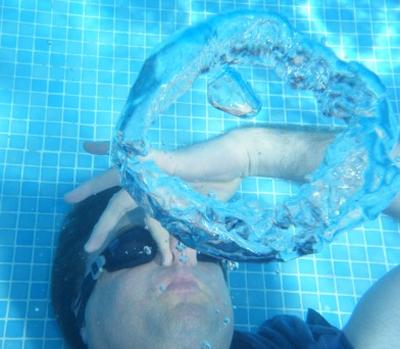Research challenge
ISVR at the University of Southampton has worked on innovative research problems for 50 years. While its successful research continues into how sound and vibration affects human beings, transport and industry, sound in engineering is usually seen in terms of a noise nuisance, or for enhancing speech and entertainment. Professor Leighton’s innovative work instead treats ‘noise’ as a source of information about the natural world (such as the oceans), and ‘sound’ as a way to change the world by inducing chemical reactions, or changing human tissue.
Context
The question ‘Why do brooks babble?’ inspired Professor Leighton's research into the acoustics of gas bubbles in liquids, bringing medical, military, industrial and environmental breakthroughs with global reach, including:
- new needle-free injectors to treat migraines (over 1 million sold);
- new sensors used on over 200 patients undergoing kidney treatment;
- co-authoring the current guidelines for every foetal ultrasonic scan in the world since 2008;
- the world’s only sonar capable of detecting mines in bubbly seawater;
- sensors for the US Department of Energy’s $1.4bn neutron-scattering facility;
- ultrasonic cleaning invention licensed to several multinationals;
The research was integral to shows by TV David Attenborough & Richard Hammond; to fashion and world-first planetarium shows; and featured in the Dutch national quiz, radio & public blogs.
Our solution
Many of the world’s problems need new solutions. Examining how bubbles work and exploiting their characteristics is a pioneering area of research that could transform healthcare and science. Professor Leighton’s team works with university, NHS and industrial collaborators to turn the theories of bubble acoustics into practice. His initial academic publication predicting its impact has been described as 'the most comprehensive and accessible text on acoustic cavitation available' and has attracted 2,000 citations so far.
What was the impact
Bubbles have the potential to bring immense benefits to humankind. Research by Professor Leighton shows how they can be applied in exciting developments in medicine through improved ultrasonic diagnostic and treatment tools that are already in use in the NHS. By adding bubbles and sound to water, his StarStream technology makes cleaning systems more efficient and reduces the amount of water needed. There are countless applications of bubble technology in science and engineering ranging from discovering unexploded mines in bubbly seawater to tracking underground or undersea gas leaks. He is in demand by journalists and broadcasters keen to understand more about the impact of bubble acoustics.
